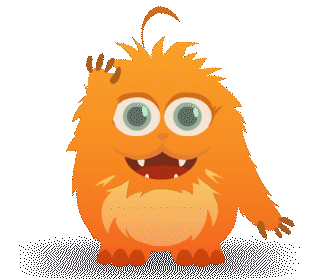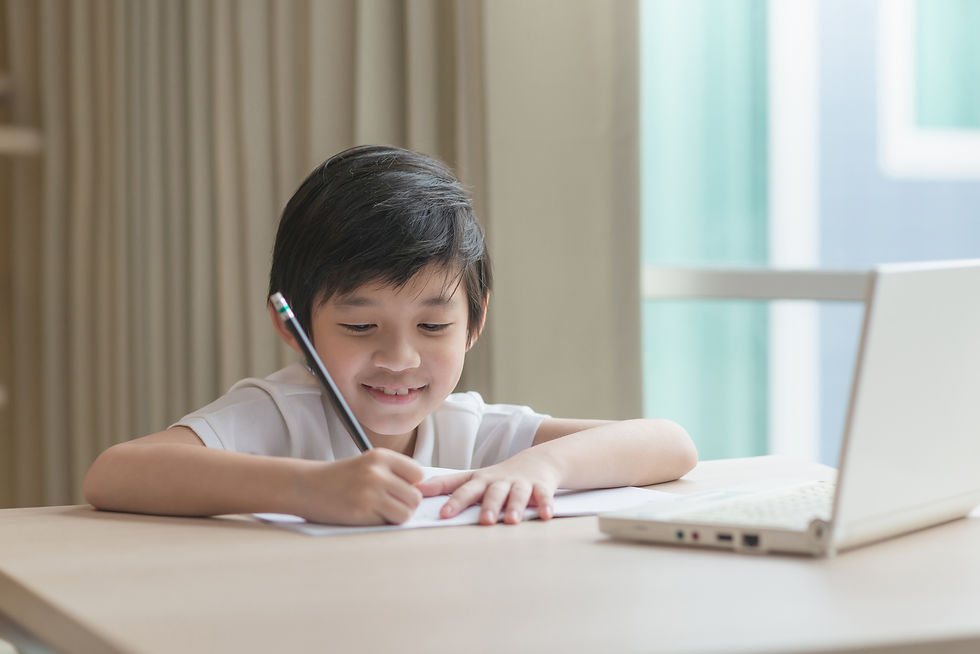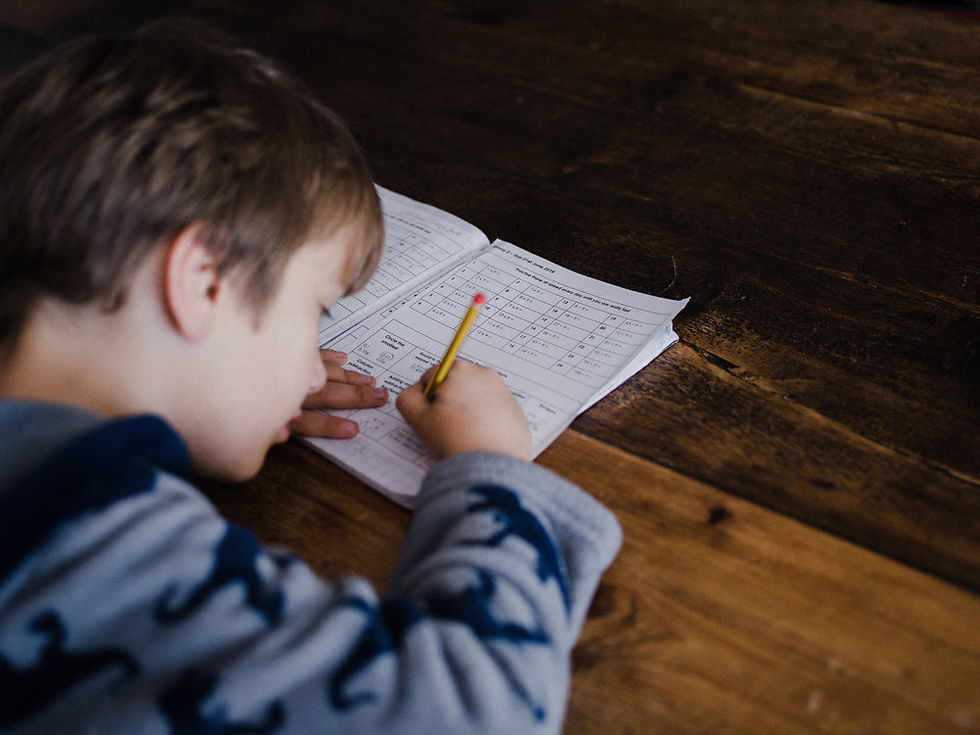Connecting the Dots - How learning how to learn can reform education
- carolynsloan
- Apr 11
- 6 min read
written by Carolyn Sloan
Think about the last time you learned to do something new. Learned how to drive. Cook. Speak a new language. Learned a new dance step. Did you think about how you learned what you did?
If you’re like most people, the answer is likely no. Those who continue to learn deep into their lives have mastered the process of learning –– you are what is often referred to as a lifelong learner. Lifelong learners are said to have courage, tenacity and the ability to transfer knowledge from one area to another, but most of us who can transfer knowledge easily have little awareness of how we do. Why? Learning has become a habit- a way of behaving that has become nearly or completely involuntary. You learn because the series of actions involved in learning for you have become internalized – unconscious and automatic. So, when a lifelong learner attempts to learn something new these ‘unconscious processes or habits kick into action and help us attain what it is we’re trying to do, be it sailing or skiing, calculus or coding.
The situation isn’t too much different when kids are in school. A teacher can quickly assess which students are adept at learning in general by the way they attend in a class discussion, or in way they seem to absorb information without too much assistance, or the way they ask questions in class. However, because learning itself is a process, and there are multiple ways in which to learn the same subject, we can highlight these different ways of learning to our kids and teachers to their students. But do we? And if we do, do students and kids adopt these multiple ways of learning and make them habits?
Unfortunately, what we see most often is that teachers and parents tend to instruct in the ways they themselves have learned. Therefore, the answer is no- we don’t, and our kids don’t internalize the habit of thinking broadly about a problem and then experimenting with multiple ways of solving the problem until we reach success. We load our kids up on required content mandated by state governments, and/or adhere to school district requirements with little attention to having kids connect the dots.
Connecting the dots is the way we make information useful.
The way we apply what we know and figure out the stuff we don’t. Logical and intuitive reasoning, inferring, and inventing are all skills that are born out of good critical thinking training. Critical thinking also demands self-awareness. Self-awareness plays a big part in mastering the art of learning because without it we aren’t able to observe how we’re actually solving a problem or why we think what we think. We can’t see our faulty reasoning, and we are blind to areas that need improvement. Without understanding what needs to be improved, or corrected, we continue to solve problems or think in static, rigid ways, not improving or correcting our mistakes.
The arts and athletics are good examples of disciplines that require self-awareness, and the ability to think about how we are doing something. Imagine your golf game or a dance step you’re trying to master. You keep swinging that club too high, or with not enough force. You aren’t counting your steps correctly to the music, so you have to go back and figure out how many beats you actually need to step. These sports or arts demand consciousness. They require you to be aware of how you’re swinging that club, how you’re moving your feet.

As a pianist, I’m aware that when I can’t play a passage correctly in a piece. I have to stop, analyze what I’m doing wrong, look at what is required in order to play it correctly and then I have to painstakingly break my faulty habit, reform the new one, (tucking my thumb sooner, holding my wrist higher with less tension, feeling the rhythm more precisely, etc.) and practice it many times over.
Students in school are usually sent home to practice a skill over and over before they have understood whether they are thinking through their process correctly. Have they talked it aloud to teacher? Have they examined their reasoning? Do they know why they are choosing a particular strategy to solve a problem? Do they even have a strategy? The questions abound.
This faulty practice then becomes ingrained and if by chance the process by which a student or child yields incorrect or misguided information, this process is what becomes habit. This series of habits leading to wrong answers and faulty reasoning becomes what is learned. Or more appropriately,
this habit becomes a lifelong, “I can’t do it. I don’t understand. I’m not good at math. Or “I hate to read.
Without proper awareness of how kids are solving a problem, a child will most likely revert to whatever strategy they are familiar with or what has been shown to them even if it doesn’t seem to make sense. They can learn this way albeit learning will be limited. But what happens when they encounter a difficulty? Will they be able to figure it out? Will they be able to invent a new way of doing something? Will they be able to learn?

Jean Piaget a Swiss psychologist who studied children’s development and devised theories based upon his close observation of them in the world, found that when a child’s prior knowledge (schemas) cannot support a present situation, they experience what he called disequilibrium. Disequilibrium is when a child becomes frustrated by what they do or do not know in order to achieve comfort in assimilating to a new environment or new task or problem. This disequilibrium pushes them to learn, as the desire for familiarity and comfort is paramount. While some learning scientists have disagreed with Piaget’s theories, he remains influential in child development in the way that he describes how children learn, mainly through discovery and experience.
We, nor our children can possibly grow if we are continually reverting only to what we already know. Prior knowledge is a support. It is a jumping off point for solving a problem.

Then we must gather evidence (discover) what other elements we need to consider in order to move the problem forward towards resolution. Video Games can give kids ample opportunities to do this in the way they center around play and discovery. They create worlds where problems must be solved, and kids are free to create their solutions. They must master this new situation or problem and in doing so, develop new skills that help them reach the next stage or learn the next set of rules that solve a problem. I.e., if I can find sand or water in the next town (in the game) I can put out the fire and move on to the next level of the game. This is a great example of discovery-based learning– the idea that children learn best through doing and actively exploring – another of Piaget’s theories.
So how do we connect the dots between discovery, disequilibrium and awareness of how we think?
Why does it matter that we focus on these connections in order to improve learning as a means of deepening our children’s educational experience? Because the purpose of education is to help all of us grow, expand how we perceive the world and most importantly how our children will be able to tackle the uncertainty now and in the future. One could argue that right now we are all experiencing this disequilibrium - trying to force our consciousness to understand a world radically different in view and experience because of a deadly virus. But it isn’t only because of this.
Think back 20 years. Think about technology and where it has taken us. Think about how science has discovered a vaccine for a virus in the same year it surfaced. Think about the quantum speed with which society has changed and is constantly transforming.
Because we hardly know what our children will need to know in ten years-time, or what we will need to know even 2 years from now, it is important that we all know how to learn. Learning after all by most people’s definition is a process. Learning is not an answer. In fact, it is only in the pursuit of a solution or an answer that we are learning.
In an effort to leave some dots disconnected, to leave you in pursuit of an answer, I challenge you to think about your thinking, and ask how can I become a lifelong learner? How can I make successful strategies into habits and finally how can I teach not only myself but my students and/or children to learn?

.png)




Comments